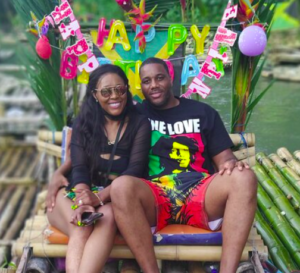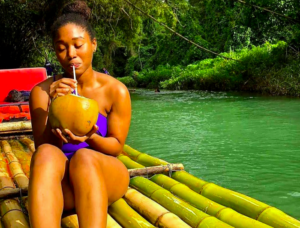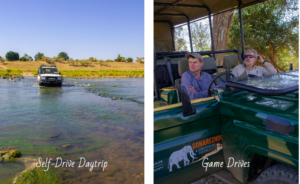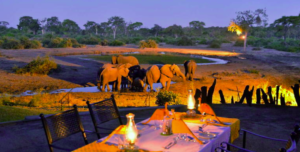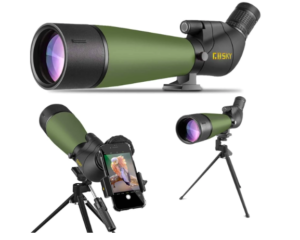
Best places to scuba dive in cayman islands
The Cayman Islands, nestled in the heart of the Caribbean Sea, are a paradisiacal retreat for anyone seeking to explore the mesmerising depths of the ocean. The Cayman Islands, renowned as one of the world’s best scuba diving locations, entice daring spirits and underwater aficionados from all over the world to embark on an astonishing aquatic trip. This trio of islands offers an unmatched scuba diving experience that is as engaging as it is unforgettable, with crystal-clear seas, bright coral reefs, and a rich marine fauna. Join us as we explore the depths of the Cayman Islands Scuba Diving experience, where every plunge under the seas promises a once-in-a-lifetime encounter.
Best Scuba Dive Sites Cayman Islands
Scuba diving locations abound in the Cayman Islands, catering to divers of all skill levels, from novices to seasoned experts. We’ll visit some of the most renowned and intriguing scuba diving spots on the islands:
1- Bloody Bay Wall, Little Cayman
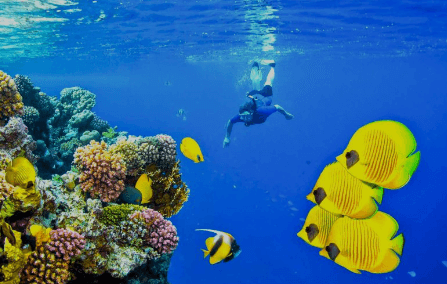
Bloody Bay Wall, located off the shore of Little Cayman, is a well-known and famous scuba diving destination. This location is renowned for its remarkable underwater beauty and tremendous diversity of marine life. Here’s a more in-depth explanation of Bloody Bay Wall:
Location and Formation:
Bloody Bay Wall is located on the north side of Little Cayman, one of the Caribbean’s three Cayman Islands.
The name “Bloody Bay” is claimed to have sprung from the crimson algae that washed up on its shores, rather than any violence or carnage.
The stunning underwater wall that drops vertically from shallow seas to astonishing depths of over 6,000 feet (1,800 metres) is the site’s major attraction. This underwater rock wall is spectacular.
Scuba Diving Experience:
Bloody Bay Wall is suitable for divers of all skill levels. Divers new to the site can explore the shallower areas, while more experienced divers can travel further along the wall.
The water here is recognised for its exceptional purity and visibility, which frequently exceeds 100 feet (30 metres), making it perfect for underwater photography.
Because the currents are normally light, it is a comfortable and safe dive spot.
Marine Life:
The sheer profusion of marine life that calls Bloody Bay Wall home is one of its most intriguing features.
Divers may expect to see a variety of colourful coral formations, including as sponges, sea fans, and hard and soft corals.
The wall is home to a wide variety of fish species, ranging from colourful reef fish like parrotfish and angelfish to bigger predators like barracudas and nurse sharks.
Eagle rays, turtles, and the rare reef shark are frequently seen here, adding to the thrill of the dive.
Unique Features:
The geology of the wall is ornamented with fascinating swim-throughs, fissures, and overhangs that give protection for a variety of marine creatures.
Divers can investigate these formations while marvelling at the underwater world’s spectacular visual splendour.
Night dives at Bloody Bay Wall provide a unique perspective, with the opportunity to see nocturnal marine species such as octopuses, lobsters, and bioluminescent invertebrates.
Conservation Initiatives:
The Cayman Islands have taken conservation seriously, and efforts have been undertaken to safeguard and preserve Bloody Bay Wall’s sensitive environment.
Divers adhere to tight standards to minimise environmental effect, and fishing and anchoring are prohibited in the region.
Bloody Bay Wall on Little Cayman is a must-see for scuba divers looking for an exciting underwater journey. Exploring the depths of this underwater wonderland offers an amazing and awe-inspiring experience in the heart of the Caribbean Sea, whether you’re a novice or an experienced diver.
2- Stingray City, Grand Cayman
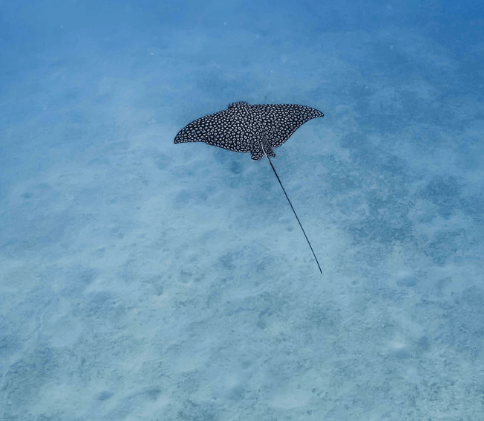
Stingray City is one of the world’s most famous and unusual scuba diving and snorkelling destinations, located off the coast of Grand Cayman, the biggest of the Caribbean’s three Cayman Islands. However, because to its shallow water depth, Stingray City is largely renowned as a snorkelling destination rather than a scuba diving site, making it accessible to a wide spectrum of visitors. Here’s a rundown of Stingray City:
Location:
Stingray City is located in Grand Cayman’s North Sound, not far from the island’s capital, George Town.
It’s a very shallow location with a sandy bottom surrounded by crystal-clear water.
The Stingrays:
The Southern Stingrays are the major draw of Stingray City. For many years, these kind and compassionate creatures have called this location home.
Stingrays are used to human interaction and are incredibly docile, giving visitors a once-in-a-lifetime opportunity to connect with these amazing marine species.
Swimming and snorkelling:
Most tourists to Stingray City snorkel rather than scuba dive since the water is waist- to chest-deep, making it perfect for snorkelers.
Snorkelling trips to Stingray City are available from tour companies, where guests may enter the water, wear snorkel gear, and see and interact with the stingrays.
Tour operators frequently feed and handle the stingrays, letting guests to touch and feed these exquisite creatures.
Possibilities for Photography:
Underwater photographers and videographers frequent Stingray City. The shallow, clean waters and friendly stingrays provide excellent photographic opportunity.
Many people take photos of themselves holding and posing with the stingrays.
Stingray City has served as a focus for ecotourism and research, assisting in raising awareness about these magnificent species.
Stingrays at Stingray City are not kept in captivity. They are free to come and go in the North Sound region.
Stingray City is more than simply a dive or snorkel destination; it’s an immersive experience that allows guests to interact with nature and observe the elegance and beauty of Southern Stingrays in their native home. It is a must-see destination for anybody visiting Grand Cayman.
3-Kittiwake Shipwreck, Grand Cayman:

The Kittiwake Shipwreck is an interesting and popular diving site off the coast of Grand Cayman, one of the Caribbean’s three Cayman Islands. It’s famous for being an artificial reef formed by deliberately sinking the USS Kittiwake, a former US Navy submarine rescue vessel. Here’s a quick rundown of the Kittiwake Shipwreck:
Location:
The Kittiwake Shipwreck is located near Seven Mile Beach in Grand Cayman’s West Bay.
It’s easily accessible by boat, with a reasonably short boat journey from the area’s most prominent diving operations.
History:
From 1945 through 1994, the USS Kittiwake (ASR-13) operated as a submarine rescue vessel in the United States Navy.
Following her deactivation, the Kittiwake was purchased by the Cayman Islands government, who opted to convert it into an artificial reef in order to enhance marine life and provide a unique diving spot.
The Kittiwake was painstakingly cleaned, stripped of any dangerous items, and then intentionally sank to its ultimate resting place on the ocean floor in 2011.
Dive Adventure:
The Kittiwake Shipwreck offers an exceptional diving experience for divers of all ability levels, including both novice and experienced divers.
The ship is docked in rather shallow seas, with the top deck at around 15-20 feet (4.5-6 metres) and the ship’s bottom at roughly 60 feet (18 metres).
Divers may explore the ship’s several decks and compartments, from the helm to the engine room.
The ship’s superstructure is accessible for penetration dives, providing wreck divers with an exciting experience.
Marine Life:
The Kittiwake has swiftly created a thriving maritime habitat. The ship’s surfaces are covered with coral growth, which attracts a variety of marine organisms.
Divers may expect to see schools of fish like sergeant majors, snappers, and angelfish, as well as bigger species like barracudas on occasion.
The ship’s framework also serves as a haven for smaller reef fish and crustaceans, transforming it into a hub of underwater activity. This makes this location one of the Best places to scuba dive in cayman islands.
The Kittiwake Shipwreck is not only a beautiful diving site, but it also demonstrates the Cayman Islands’ dedication to marine conservation and sustainable tourism. Divers visiting Grand Cayman may explore the fascinating depths of this artificial reef while learning about the ship’s history and the diverse marine life that now calls it home.
4- Eden Rock & Devil’s Grotto, Grand Cayman

Eden Rock and Devil’s Grotto are two interrelated and fascinating diving locations off the coast of Grand Cayman, one of the Caribbean’s Cayman Islands. These locations are well-known for their distinctive underwater rock formations, complicated swim-throughs, and thriving marine life. Here’s a quick rundown of Eden Rock and Devil’s Grotto:
Location:
Eden Rock and Devil’s Grotto are both located near George Town, Grand Cayman’s capital.
They are easily accessible by boat, and many of the island’s diving operations provide guided dives to these locations.
Underwater Terrain:
Eden Rock and Devil’s Grotto are famous for their limestone structures, which have been worn by the sea through time, resulting in a maze of gaps, tunnels, and caverns.
The swim-throughs at these locations vary in size, allowing divers of all skill levels to enjoy these natural wonders.
The terrain is distinguished by a profusion of coral, sponges, and colourful marine life.
Dive Adventure:
These diving spots are appropriate for both novice and expert divers. Novice dives can explore the shallower parts, while more experienced divers can go deeper.
The dive usually begins in the shallower Eden Rock region, which features stunning coral formations and swim-throughs.
Divers can explore the Devil’s Grotto as they continue, where the underwater tunnels and caverns grow increasingly complicated and aesthetically magnificent.
Dive conditions here are frequently tranquil, making it pleasant and enjoyable for anyone.
Marine Life:
Eden Rock and Devil’s Grotto are home to a wide variety of marine animals, offering each dive a unique underwater experience.
Divers can see parrotfish, angelfish, snappers, and damselfish, among other reef fish.
Lobster, crabs, and other tiny marine animals find refuge in the fissures and caverns.
Night dives in these places allow you to see nocturnal species such as octopuses and bioluminescent crustaceans.
Divers may discover the hidden beauties of the Cayman Islands’ underwater environment at Eden Rock and Devil’s Grotto, which provide a compelling underwater excursion. Whether you want to take a leisurely dive through fascinating swim-throughs or photograph the splendour of marine life, these interconnected locations provide a memorable and surreal underwater experience in the heart of the Caribbean.
5- North Wall, Cayman Brac

The North Wall of Cayman Brac is a world-renowned scuba diving spot off the northern shore of Cayman Brac, one of the Caribbean’s three Cayman Islands. This spectacular dive site is known for its magnificent underwater vistas, tremendous drop-offs, and rich marine life. Here’s a closer look of Cayman Brac’s North Wall:
Location:
The North Wall is an underwater continuation of Cayman Brac’s rough landscape and rocks.
It is reachable by boat from a variety of diving operations on Cayman Brac.
Underwater Topography:
The North Wall is distinguished by a spectacular underwater cliff that drops steeply to depths of over 1,000 feet (300 metres) in certain locations.
Intricate coral formations, including colourful sponges, sea fans, and both hard and soft corals, cover the wall.
The wall is riddled with swim-throughs, overhangs, and fissures, resulting in a fascinating and labyrinthine underwater scene.
Dive Adventure:
The North Wall is appropriate for divers of all skill levels, although it is especially popular with experienced divers because to the possibility of deeper dives.
The dive usually begins with a descent along the wall, which provides good visibility and the opportunity to see a variety of marine species. This is one of the Best places to scuba dive in cayman islands.
Advanced divers can explore deeper areas of the wall, where they may come into contact with pelagic species such as reef sharks, turtles, and eagle rays.
Marine Life:
Marine biodiversity abounds on the North Wall. Divers may expect to see schools of vibrant reef fish such as angelfish, parrotfish, and groupers.
Larger predators like barracudas and reef sharks are frequently spotted roaming the region.
The overhangs and cracks of the wall give cover for smaller creatures such as lobsters, crabs and several sorts of prawns.
Divers may even see passing whale sharks and dolphins during the right season.
Photography Opportunities:
The North Wall attracts underwater photographers because of its magnificent beauty and varied marine life.
The pristine waters and well-preserved coral formations make it a perfect spot for taking spectacular underwater photographs and films.
6- Little Cayman’s Great Wall:

Little Cayman’s Great Wall is an amazing and well-known scuba diving location located off the shore of Little Cayman, one of the Caribbean’s three Cayman Islands. This underwater treasure is known for its immaculate coral formations, breathtaking wall dives, and thriving marine life. Here’s a quick rundown of Little Cayman’s Great Wall:
Location:
The Great Wall is located on the northern shore of Little Cayman, which is recognised for being more serene and less developed than its bigger neighbour, Grand Cayman.
This diving spot is only accessible by boat and offers divers an undisturbed underwater habitat.
Underwater Topography:
Little Cayman’s Great Wall is named for the spectacular underwater wall that drops to depths of almost 3,000 feet (900 metres).
The wall is known for its colourful coral formations, which include enormous barrel sponges, sea fans, and both hard and soft corals.
The crystal-clear waters provide exceptional vision, allowing divers to take in the breathtaking landscape.
Dive Adventure:
The Great Wall may be enjoyed by divers of all ability levels. The shallower sections of the wall are suitable for novice divers, while the deeper sections are suitable for expert divers.
The wall provides a stunning backdrop for diving, and drift diving is popular due to the gentle currents that gently take divers down the face of the rock.
Conservation Efforts:
The Cayman Islands prioritise conservation, and efforts are done to safeguard the Great Wall’s sensitive maritime ecosystem.
Dive operators use appropriate diving practises, and anchoring is normally avoided to minimise coral reef damage.
The Great Wall of Little Cayman is a must-see for scuba divers looking for an immersive and awe-inspiring underwater journey. The Great Wall provides a genuinely memorable and surreal scuba diving experience in the heart of the Caribbean, whether you’re a beginning diver enjoying colourful coral gardens or an experienced diver plunging into the depths of this underwater masterpiece.
7- Owen Island, Little Cayman
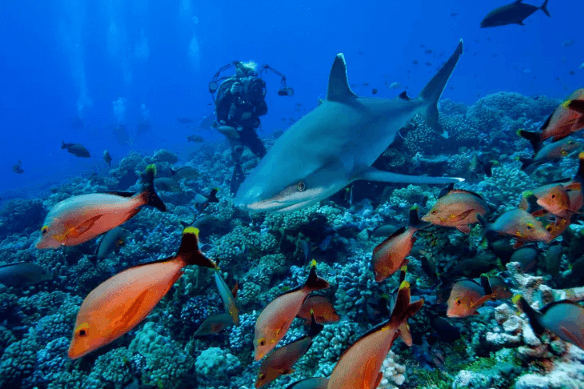
Owen Island is a remote and beautiful diving spot located off the coast of Little Cayman, one of the Caribbean’s three Cayman Islands. This lovely location is recognised for its pristine coral reefs, clean seas, and tranquil undersea habitat. Here’s a quick rundown of Owen Island:
Location:
Owen Island is located southwest of Little Cayman and is mostly accessible by boat.
The Cayman Islands Marine Park protects the surrounding waterways, which aids in the preservation of the fragile marine ecology.
Underwater Terrain:
Owen Island is noted for its healthy and pristine coral reefs, making it a paradise for divers looking for a peaceful and natural underwater experience.
The underwater landscape has vivid coral formations, sandy bottoms, and a wide range of coral species, including hard corals.
Dive Adventure:
Owen Island is appropriate for divers of all ability levels, from novice to expert.
A boat trip to the diving location is usually followed by a leisurely fall into the clear and warm seas.
Divers may explore coral gardens, swim along reef walls, and see a variety of aquatic creatures.
Marine Life:
Owen Island is a haven for marine life. Divers may expect to see schools of brightly coloured reef fish including sergeant majors, parrotfish, and butterflyfish.
Crabs, lobsters, and sea cucumbers are among the invertebrates that live on coral reefs.
While bigger pelagic species are less prevalent here than at other dive locations, the tranquilly and pristine beauty make up for it.
Possibilities for Photography:
Owen Island provides fantastic opportunity for underwater photography. The beautiful photographs are made possible by the transparency of the water and the vivid coral formations.
Photographers may capture the natural beauty of the coral gardens as well as the various marine life that inhabits this region.
Conservation Initiatives:
The Cayman Islands place a high value on marine protection, and Owen Island is part of the Cayman Islands Marine Park. This is one of the Best places to scuba dive in cayman islands.
Divers visiting Owen Island are asked to practise responsible diving, such as avoiding contact with fragile coral and not disturbing marine life.
Owen Island in Little Cayman is a hidden treasure for divers looking for an unspoiled and peaceful underwater experience.
FAQs about scuba diving Cayman Islands
What are the Cayman Islands famous for when it comes to scuba diving?
The Cayman Islands are one of the world’s top scuba diving destinations due to its crystal-clear seas, colourful coral reefs, and rich marine life.
Which Cayman Islands islands are ideal for scuba diving?
The primary islands where scuba diving is popular are Grand Cayman, Little Cayman, and Cayman Brac. Each has its own set of diving locations and experiences.
When should you go scuba diving in the Cayman Islands?
The Cayman Islands provide fantastic diving all year. The ideal weather conditions, however, often occur between November and April, when the seas are calm and visibility is at its greatest.
How clear is the water in the Cayman Islands?
The Cayman Islands have remarkable water visibility, typically surpassing 100 feet (30 metres) or more, especially during the winter months.
What should I look forward to seeing while scuba diving in the Cayman Islands?
Divers may see a variety of marine life, such as colourful coral formations, reef fish, turtles, rays, sharks, and even the rare whale shark or dolphin.
Are there any beginning diving locations in the Cayman Islands?
Yes, many dive locations are ideal for novices, particularly in shallower waters and along calm shorelines. Many diving shops offer basic certification training.
Are advanced dive locations available for experienced divers?
Absolutely. The Cayman Islands include several advanced dive sites, such as deep cliffs, wrecks, and difficult swim-throughs, that are excellent for experienced divers.
What are some of the most well-known wreck dives in the Cayman Islands?
The USS Kittiwake, located off the coast of Grand Cayman, is a popular wreck dive, and there are numerous smaller wrecks and artificial reefs spread across the islands.
Is a diving certification required to scuba dive in the Cayman Islands?
To participate in most scuba diving tours, you must be a certified diver. Some operators, however, provide basic training for newcomers.
Is it possible to scuba dive at night in the Cayman Islands?
Yes, many dive operators offer night dives, which provide a once-in-a-lifetime opportunity to see nocturnal marine life and the underwater environment in a new light.
Is it safe to go shark diving in the Cayman Islands?
Yes, shark diving in the Cayman Islands is normally safe. Operators provide shark diving experiences, frequently with reef sharks, and take all essential safety procedures.
What should I bring on a Cayman Islands scuba diving trip?
Your certification card, dive logbook, swimsuit, sunscreen, dive gear if you have it (otherwise it may be rented), and a sense of adventure are all required.
Are there environmental regulations for diving in the Cayman Islands?
To conserve the reefs and marine life, the Cayman Islands have strong conservation and environmental rules. Divers are advised to practise safe diving practises.
Can I combine scuba diving with other Cayman Islands activities?
Absolutely. The Cayman Islands provide a variety of activities, from snorkelling and kayaking to exploring on land, allowing for a well-rounded trip.
How can I arrange scuba diving tours in the Cayman Islands?
Scuba diving trips may be booked through local dive companies or through your lodging. Many operators have websites where you may book online.
Related
Best Winter Scuba Diving Destinations To Visit This Year.
Best Scuba Diving Spots In The United Kingdom.
Unveiling The Best Scuba Dive Locations In Europe.
13 Best States Scuba Diving Adventures in the United States.

